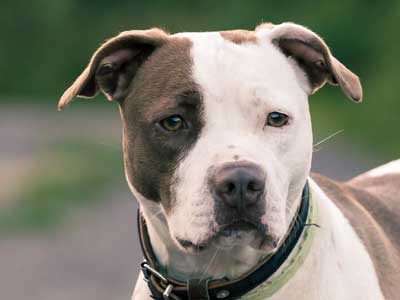Boxer
Breed Information |
|
|---|---|
| Popularity |
2022: #16 2021: #14 2020: #14 2018: #14 2018: #11 2017: #11 2016: #10 2015: #10 |
| Name | Boxer |
| Other names | German Boxer, Deutscher Boxer |
| Origin |  Germany Germany |
| Breed Group |
Working (AKC:1904) Guardian (UKC) |
| Size | Large |
| Type | Purebred |
| Life span | 10-12 years |
| Temperament |
Brave Bright Confident Energetic Fearless Friendly Intelligent Loyal Playful |
| Height |
Male: 22-25 inches (56-63 cm) Female: 21-24 inches (53-61 cm) |
| Weight |
Male: 60-70 pounds (27-32 kg) Female: 53-65 pounds (24-29 kg) |
| Colors |
Brindle Fawn White |
| Litter Size | 2-10 puppies, average 6 |
| Puppy Prices |
Average $1000 - $2000 USD Usually, the average cost of purchasing a pet quality puppy from a reputable breeder is about $1,000 to $2,000. However, for a Boxer puppy with top breed lines and a superior pedigree, you may need to pay between $3,000 and $4,500. |
Breed Characteristics |
|
|---|---|
| Adaptability |
4 stars |
| Apartment Friendly |
4 stars Boxers will do okay in an apartment if sufficiently exercised. They are fairly active indoors and do best with at least an average-sized yard. Boxers are temperature sensitive, getting easily overheated and chilling very quickly. |
| Barking Tendencies |
2 stars Occassional |
| Cat Friendly |
3 stars |
| Child Friendly |
4 stars Good with Kids: This is a suitable breed for kids and is known to be playful, energetic, and affectionate around them. |
| Dog Friendly |
2 stars |
| Exercise Needs |
4 stars An active, athletic breed, Boxers need daily work or exercise, as well as a long brisk, daily walk. They also enjoy fetching a ball or other sessions of play. |
| Grooming |
1 stars Low Maintenance: A soft bristle brush will help keep the coat in good condition. An occasional bath, especially if they are dirty from romping in the outdoors will also keep them looking their best. Their strong nails should be trimmed regularly with a nail clipper or grinder to avoid overgrowth, splitting and cracking. Their ears should be checked regularly to avoid a buildup of wax and debris which can result in an infection. Teeth should be brushed regularly. |
| Health Issues |
3 stars Hypoallergenic: No |
| Intelligence |
4 stars Ranking: #49 Full Ranking List |
| Playfulness |
4 stars |
| Shedding Level |
3 stars Moderate Shedding: Routine brushing will help. Be prepared to vacuum often! |
| Stranger Friendly |
3 stars |
| Trainability |
3 stars Moderately Easy Training: The Boxer must be trained not to jump up at people as it is naturally fond of jumping. The Boxer is ideal for various sporting activities because it can be highly trained and learns very quickly. Boxers may be stubborn in learning, but they are responsive to commands. |
| Watchdog Ability |
5 stars |
Boxer Dog Names |
||
|---|---|---|
| Rank | Boy Names | Girl Names |
| 01 | Max | Bella |
| 02 | Cooper | Daisy |
| 03 | Charlie | Abbie |
| 04 | Tucker | Molly |
| 05 | Buddy | Bailey |
| 06 | Oscar | Coco |
| 07 | Bentley | Zoe |
| 08 | Milo | Sophie |
| 09 | Bailey | Katie |
| 10 | Louie | Penny |
| 100 Cute Puppy Names › | ||
Overview |
|---|
|
The Boxer is exemplary in its combination of stylish elegance with strength and agility. It is square-proportioned with good substance and musculature. Its stride is free and ground-covering, with proud carriage. Its head is distinctive, with a broad, blunt muzzle and alert expression. Its coat is short and shiny. It is perfectly suited to serve as a working watchdog. The boxer is playful, exuberant, inquisitive, attentive, demonstrative, devoted and outgoing; it is a perfect companion for an active family. It can be stubborn, but it is sensitive and responsive to commands. It may be aggressive toward strange dogs, but it is generally good with other household dogs and pets. |
History |
|
The Bulldog is an ancestor of the Boxer; various terriers were also part of its make-up, which gives the breed its speed, agility and more graceful body. The term “boxer” is British, but the most recent home country for the breed is Germany. “Boxer” seems appropriate since it has a mannerism of using its front legs in combat, much as a man would in fighting. The breed was virtually ignored until World War II, when it was brought into use as a military or police dog. This helped to insure instant popularity with returning servicemen, and the breed became in demand in the United States. |
References
- [1] ^ YouTube: Boxer Dog - Top 10 Facts
- [2] ^ American Kennel Club: 8 Boxer Facts You Might Not Know





